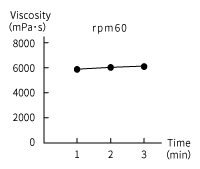Tomato puree is made by applying heat, straining, and boiling down ripe tomatoes into a thick puree.
When seasonings such as sugar, salt, vinegar, also vegetables such as onions and celery are added, to the tomato puree, it becomes ketchup. Ketchup is a versatile condiment that is loved by people from all over the world. It is used for western style food such as hot dogs, French fries, omelets, and in Chinese food, it is used to make such food as stir-fried shrimp in chili sauce. When you think of a ketchup container what do you see? A container of ketchup can range from a glass bottle to a flexible plastic tube. When a ketchup container is turned upside down, the ketchup does not readily come out unless shaken or squeezed. Ketchup is a thixotropic fluid which is classified as a non-Newtonian fluid which has property of becoming a liquid like state when force is applied and returns to gel like state without force. The thick viscous consistency of ketchup comes from the pectin in the tomato. Pectin is easily broken down by the enzymes found in tomatoes. For this reason, when making highly viscous ketchup or jam, this enzyme needs to be inhibited. On the contrary, when making other processed tomato products like juice that is low in viscosity, it is important to break down the pectin. In such a way, viscosity can influence the mouth feel.
Viscosity of Tomato Ketchup
VISCO™ measurement examples
Spindle : A3L
Sample temperature : 30℃

Customer comments
VISCO™ was selected for its portability and data storage capacity for onsite and quality control of tomato processing. This company manufactures various types of ketchup and tomato sauces for different uses. Their raw ingredients, viscosity, consistency, salt content, and pH levels varies. In addition to the VISCO™, this company is using ATAGO’s salt meters and concentration meters.